It was a big hit in the beginning. Visitation to the store was almost a daily vernissage.
It was a big hit in the beginning. Visitation to the store was almost a daily vernissage.
Soon after celebrating his graduation, in 1952, Sergio was divided, for a time, between Rio de Janeiro and his work in Curitiba. He had an apartment in the capital of Paraná, and considered the office’s location very good. He developed a great friendship with his assistants, architect colleagues, and engineers. He was in charge of the Departments Palace, a 30-floor building. Passionate about the work, he had “wonderful ideas.”
Work was going full steam ahead when architects and engineers were called to a meeting. They learned that the money for the works had ran out because of the poor coffee harvest that year, that it was a tragedy, and that the project would not continue. Sergio had a daughter, Ângela, who was born in Rio de Janeiro, and the family spent a lot of money traveling from one city to the other.
However, as he had anticipated that the work might be interrupted, Sergio decided, in the meantime, to open a furniture store, since the movement at the Civic Center attracted a lot of people to work there who could be potential customers. While going back and forth, he had met the Italian designer Carlo Hauner, who had gone to Curitiba to open a branch of a large furniture store there used to be in São Paulo. Sergio had also met decorator Julio Senna, who was creating the ambiance at the Governor’s Palace. Contact with the two opened the door for him to create interior equipment and “adjust it properly to the Brazilian reality.”
“I went crazy with that. Having a connection with someone from Italy and doing more intensive work was phenomenal.” Sergio and Carlo, together with his brother Ernesto Hauner, became partners and stayed at the “furniture boutique,” which had the same name as the other one in São Paulo: Móveis Artesanal. The difference was that, in Curitiba, Paraná, it was called Artesanal Paranaense. To open the store with his partners, Sergio asked for help from his grandmother Stella, who had sold the little castle and could afford her grandson’s shop.
In Icatu’s book about Sergio Rodrigues, André Seffrin describes life in Curitiba at the time the designer opened his store: “The Curitiba of the early 1950s, from the intellectual viewpoint, was that of Dalton Trevisan winning over his first Brazilian readers […]. It was the Curitiba of Glauco Flores de Sá Brito, a poet, playwright, and television man; of Poty Lazzarotto and of Guido Viaro, in the graphic arts and painting; of Themistocles Linhares and Wilson Martins, the voices of a new criticism and of a new view on history […]. Eating chicken stew at the Santa Felicidade restaurants, slicing pine nuts in winter, temperatures below freezing.” During this period, Sergio bought his first car, a German VW Beetle, which he later took to São Paulo.
The experience lasted a year, from 1953 to 1954. It was a big hit in the beginning. Visitation to the store was almost a daily vernissage. People came from all over Paraná to check the novelty out. There was traditional furniture, created by Hauner. Well-made, but traditional. Sergio became a Hauner representative in Curitiba. And he started drawing because he had already discovered that what he loved was creating furniture. At that time, he began designing gaming tables and complementary tables.
But the project failed. Since Curitiba was a kind of “style” furniture capital, the most sophisticated Curitiba residents preferred to buy directly in São Paulo. “The store was a tragedy. Six months after it opened so successfully, and to the delight of Curitiba residents, it closed. No one bought anything. There were six months of zero income.”
As he already had all of the infrastructure ready, Sergio decided to open another shop with friends from Rio and São Paulo, with furniture left over from Móveis Artesanal, which belonged to Hauner, and made by other São Paulo designers. It was a representation shop. It was another fiasco. “It sold nothing and accumulated a huge loss.”
Sergio was then in doubt about whether or not to remain in Curitiba. “I was known there.” Before taking the decision he was called by two contractors for two buildings. He gave his price, but the businessman said, “What kind of price is this that you are asking me for? I can hand it over to any designer and he will do it for a millionth of what you are asking for.” Says Sergio: “So, I said: doctor, keep your project and enjoy yourself.”
For another project, the building of a luxury Country Club, Sergio prepared 12 wonderful clipboards. “On the eve of the competition, the club’s president, covered in perfume, came to my house awkwardly and said he had some bad news. He asked me not to send the project in to avoid embarrassment, because the winner had already been picked, and someone from Rio would have no chance. I could charge for my work, but no price had been set. It was a very unpleasant thing.”
Thus, the solution was to leave town. He had been in Curitiba for two and a half years. Sergio called Hauner:
– I’m here in a crunch misery, with my daughter, family, I have no money to do anything. Would you have something there for me?
And Hauner said:
– Grab your stuff and come to São Paulo. I will make living arrangements for you, come here, stay nearby me, and work with me. Grab your stuff and come.
From his adventure in Curitiba, Sergio only took his VW Beetle with him.
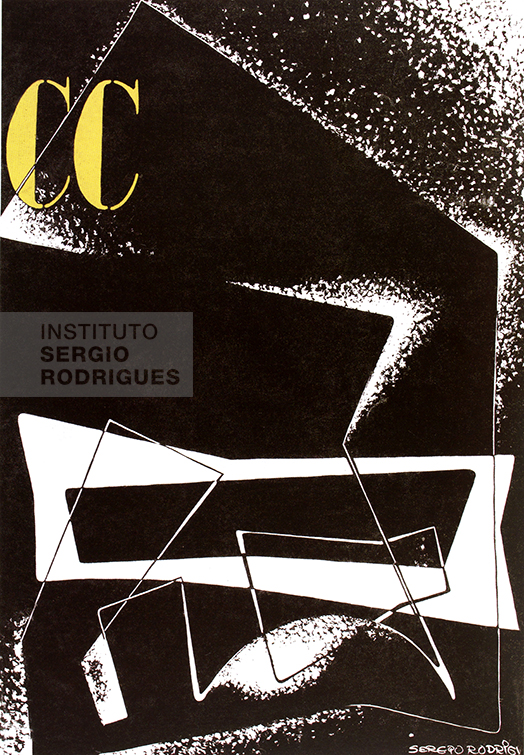
Cover designed by Sergio Rodrigues for the official publication of the project for the Civic Center of Curitiba, Paraná, 1953.
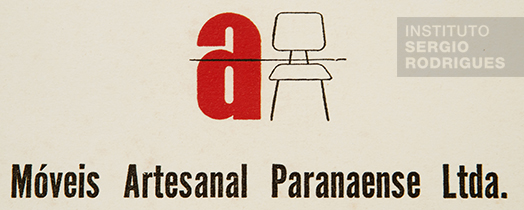
Logo of the Móveis Artesanal Paranaense store, created by graphic artist Leopold Haar for the Curitiba unit, in 1953.
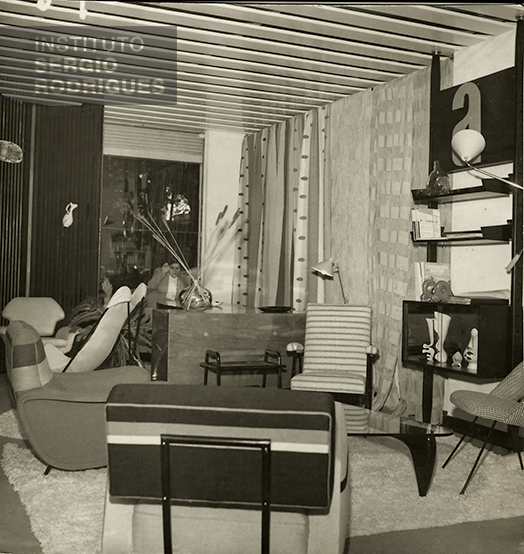
Interior of the Móveis Artesanal Paranaense store, where Sergio Rodrigues was a partner of the Carlo and Ernesto Hauner brothers, in Curitiba, Paraná, 1953.
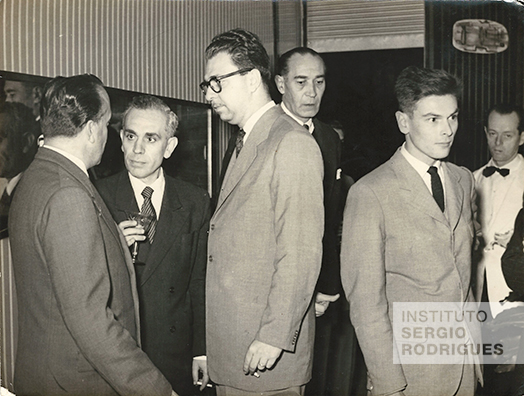
Inauguration of the Móveis Artesanal Paranaense store, in Curitiba, in 1953, attended by Count Paolo Grasselli (to the left with his back turned) and by designer Enesto Hauner (at the right-hand tip of the photo, turned forward).
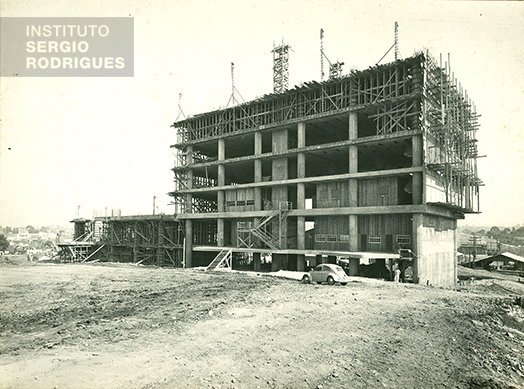
Building under construction at the State Department Palace, at the Civic Center of Curitiba, Paraná, 1953.
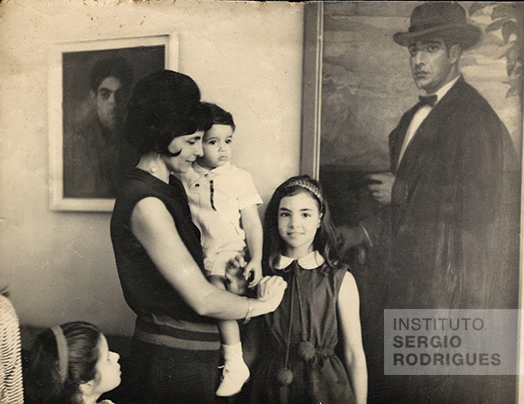
Vera Maria Serpa Campos, Sergio Rodrigues' first wife, with Roberto (lap), Ângela Maria (to the right), and Adriana, at his paternal great grandmother Ester Falcão Rodrigues' house, in Rio de Janeiro, in the 1960s.
